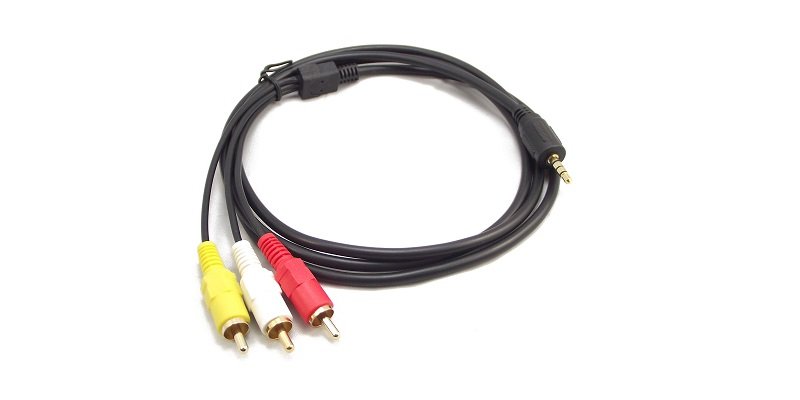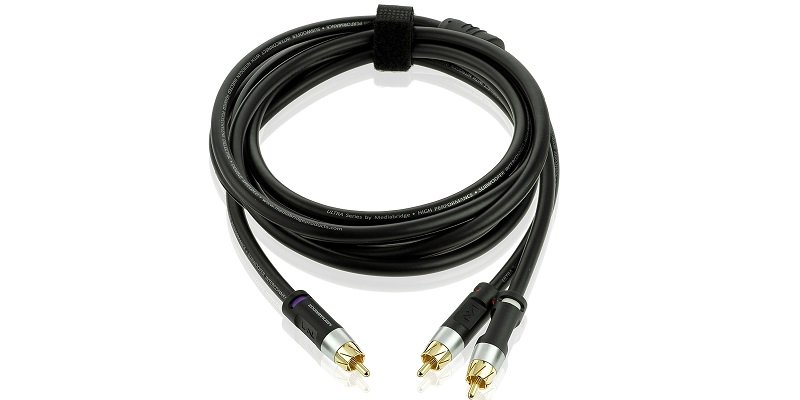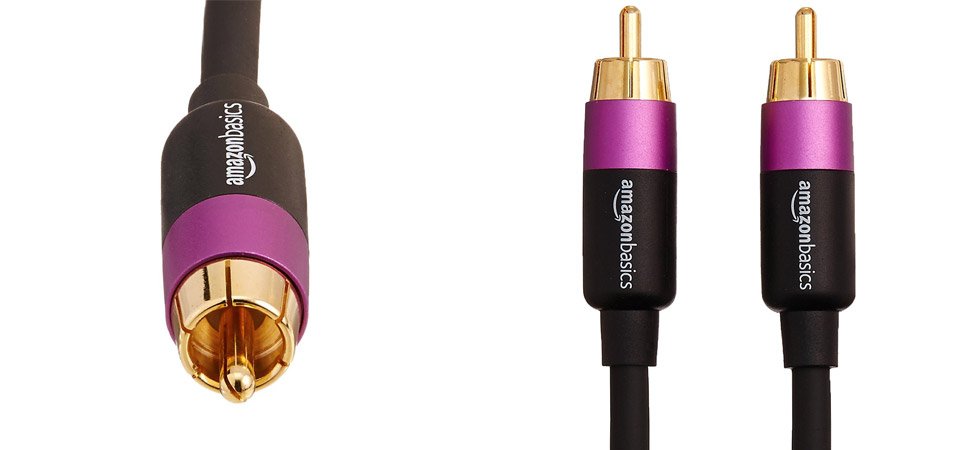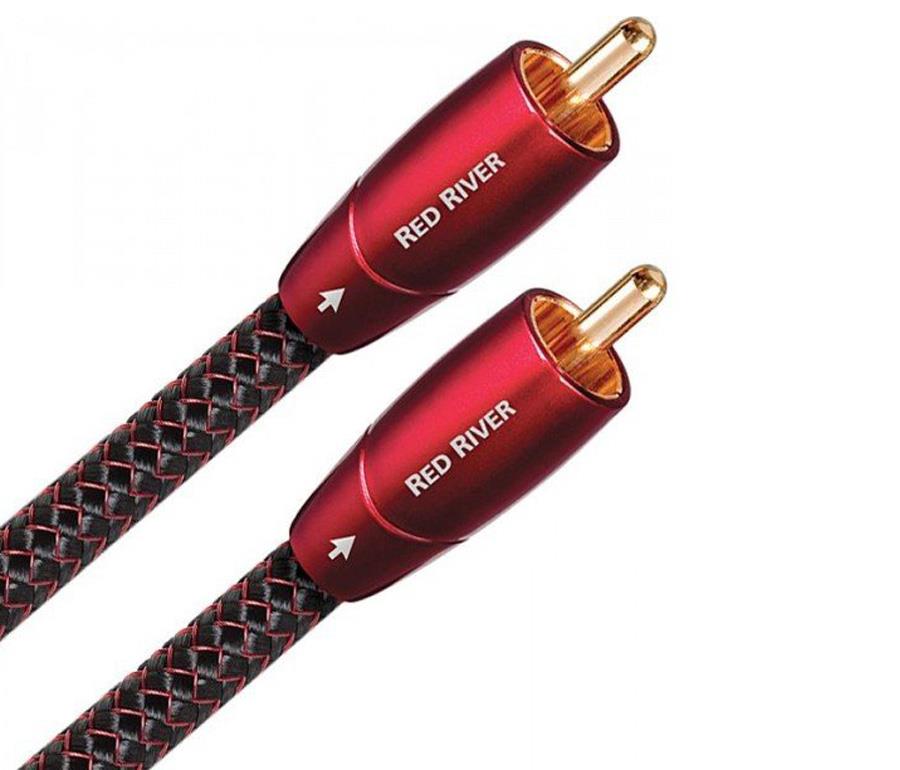The term “RCA” comes from the name of the developer, Radio Corporation of America, and is used to identify any coaxial cable with RCA push-in connectors. A “subwoofer” identifies a cable that connects an audio amplifier to a speaker and reproduces low-frequency sound signals.
RCA Cable

Originally, RCA cables were created to transmit a signal between a phonograph and an amplifier. Today, they are greatly improved and allow connecting AV signals of different entertainment systems at home.
RCA cables come with almost any AV device. A central contact of the cable connector is surrounded by grounding contacts. Such a design protects a signal (central) contact from electromagnetic interference and is called coaxial. RCA cables are very common and can connect audio and video components of completely different quality.
RCA cables provide two fundamentally different connections – composite and component.
- Composite connection uses one RCA cable to transmit images simultaneously blending the colors and brightness. Other two RCA cables are usually used to transmit analog stereo signal (left and right channel).
- Component connection transmits video through three cables dividing the colors into two groups and separating brightness. Such an approach significantly improves the picture but increases the number of wires up to three.
Subwoofer Cable
Most subwoofers use RCA plugs for connection and they all can transmit a signal, however, some manufacturers have added some advanced features to an RCA cable and called it “subwoofer”. So what is a subwoofer cable? This is a more complex product compared to an ordinary RCA cable. It requires a different type of a wire, which implies more innovations in terms of material used for the conductor and dielectric coating.
Subwoofer cables are designed to connect an audio amplifier to a speaker that produces the sound of low frequency (up to 100Hz). The connection itself may require a few wires or a single RCA cable: it depends on a particular system and its features.
RCA Cable for Subwoofer
When it comes to RCA Subwoofer Cables, in most cases, this is an ordinary RCA cable of a better quality that implies more suitable materials. Notice: 60Hz is the usual level of household electricity operating, which often produces annoying hum in speaker systems. There may be two reasons:
- some other equipment or wiring creates induction into the speaker cable,
- a ground loop allows the hum of 60Hz to travel on the coaxial cable shield.
A subwoofer frequency range influences hum greatly. Thus, if an RCA cable connected to a subwoofer is equipped with extra shielding, it allows reducing hum from induction. However, it doesn’t work with a ground loop. In this case, it’s recommended to use the AC input isolation transformer. It should help.
Ways to Connect Subwoofer

There’re many ways to connect a subwoofer, but in 99% of cases, this is an LFE connection type. Most subwoofers require a single long cable with RCA connector. Connect it to the output of the AV receiver preamp and to an LFE (low-frequency effect) port of a subwoofer. Some models are equipped with stereo inputs for the right and left channels: they are usually connected to appropriate outputs of the preamp of the Hi-Fi amplifier.
However, there’re also subwoofers with a high-level connection. In this case, it’s necessary either to run an acoustic cable for a sub and speakers or to use another set of cables to connect a subwoofer and amp.
Many stereo receivers and amplifiers are equipped with subwoofer outputs for LFE connection. In this case, use a cable that has an RCA connector at each end (“male-male” type).
Cable Length: Short or Long?
Some cables that come with a device often have particular standard length but keep in mind: the shorter the better. A short cable guarantees fewer signal distortions. However, don’t pick too short cable: it should be long enough to put a subwoofer in different places to get the best sound (location influences the sounding a lot).
The Best RCA Cable to Pick

Many cables provide an excellent sound of a home audio system, but, at the same time, they are quite expensive. If you are not a music geek and don’t use too expensive equipment, you just can purchase an ordinary audio cable of good quality. The best option is the AmazonBasics Subwoofer Cable.
The cable is well-built (equipped with RCA connectors that corrosion-resistant) and decently copes with its functions (carries low-frequency signals, providing superb sound and bass). Another advantage is its great length. By the way, AmazonBasics Subwoofer Cable can be purchased in different lengths. The best thing about this cable is that it ensures outstanding subwoofer sounding and doesn’t require many expenses.
The Best RCA Subwoofer Cable to Pick

However, if you are a true music lover and there’s nothing more important than an original signal without any cable distortion, and the cost of a cable doesn’t bother you, consider AudioQuest – Red River RCA cable.
AudioQuest is famous for its high-quality products. Red River is created according to the highest standards. The cable has a triple-balanced design with a separate ground conductor that removes any noise. Its triple-layer noise dissipation system is specially designed to protect a signal from RF interference. LGC (LONG-GRAIN COPPER) structure of the cable makes it one of the best of its kind. Red River is a reliable cable that complies with the requirements of the strictest and the most demanding user.

Hi everyone! I’m Thomas Moody, also known as Guitarzan.

